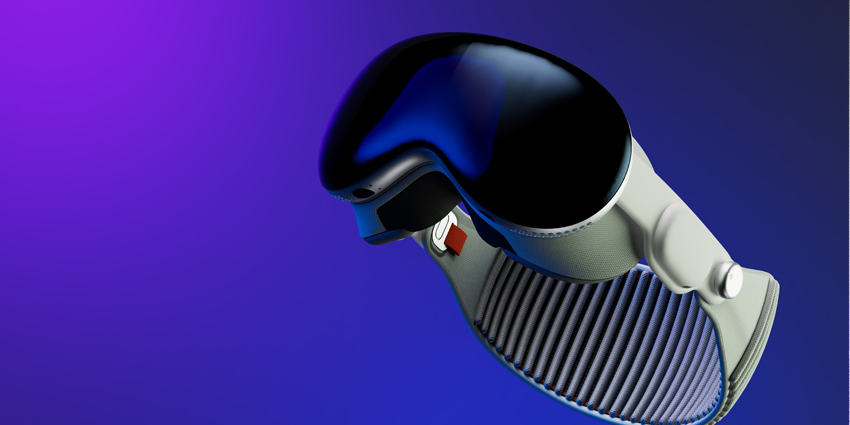This week, reports revealed that Google is laying off a significant portion of its 1P AR hardware team, casting doubts upon its in-house XR product portfolio. Notably, the reshuffle is occurring following a partnership with Qualcomm and Samsung to leverage the newly announced Snapdragon XR2+ Gen 2 chipset for empowering smart glasses.
Google is laying off hundreds of employees across its company, with most of the losses affecting its 1P AR hardware team that previously worked on its smart glasses hardware, including the now cancelled “Iris” prototype.
In a statement, Google announced:
A few hundred roles are being eliminated in DSPA, with the majority of impacts on the 1P AR Hardware team. While we are making changes to our 1P AR hardware team, Google continues to be deeply committed to other AR initiatives, such as AR experiences in our products and product partnerships.
Is Google Delecating its Hardware Interest to Samsung?
However, not all may be lost for Google’s AR roadmap. The news comes following the recent Qualcomm Snapdragon chipset announcement that squarely placed Google in the mix for supporting the creation of future AR services,
The XR2+ Gen 2 chipset launch also marks the product’s debut on the Snapdragon platform, which provides the foundation for AR/VR/MR application development, deployment, and adoption.
Qualcomm utilizes its chipset and Snapdragon platform to enhance consumer- and enterprise-grade XR experiences on headsets and smart glasses, achieved through collaborations with Samsung, Google, Tobii, and Goertek to deliver exceptional display clarity for gaming and productivity applications.
Shahram Izadi, the Vice President of AR at Google, noted how the firm is supporting Snapdragon Android operations to enable developers to “take advantage of Snapdragon XR2+ Gen 2’s capabilities and enable new experiences” in collaboration with Samsung and Qualcomm to drive the future of immersive and spatial computing.
Moreover, rumours highlight how Samsung is developing an XR device; this background, mixed with the Qualcomm/Google partnership, may highlight how Google is reducing its in-house AR hardware teams, delegating that pipeline and instead working on software framework to power XR devices.
As part of its recent statement regarding lay-offs, Google noted how it remains “deeply committed to other AR initiatives,” perhaps regarding its partnership with Samsung.
Inkang Song, the Vice President and Head of the Technology Strategy Team at Samsung Electronics, also noted:
Samsung is thrilled to collaborate with Qualcomm Technologies and Google in revolutionizing the mobile industry once more. With Samsung’s mobile expertise and our joint commitment, we aim to create the best-in-class XR experience for Galaxy users.
More on XR2+ Gen 2 Chipset
Qualcomm Technologies introduced the Snapdragon XR2+ Gen 2 Platform as a new chipset designed to enhance the quality of XR displays, visuals, AI integration, and overall user experience.
Qualcomm’s XR2+ Gen 2 chipset is an affordable vendor option, lowering the entry barrier for workplace AR/VR/MR. Moreover, the company is positioning the XR2+ Gen 2 alongside its launch partners as a tipping point in XR hardware design and innovation, equipped with breakthrough features and specs.
The Snapdragon XR2+ Gen 2 chipset unlocks 4.3K resolution to enhance XR productivity and entertainment experiences. The new chipset also offers improved GPU power of 15 per cent and CPU frequency of 20 per cent, making it possible to produce more realistic and detailed experiences for MR and VR applications.
Qualcomm’s upgraded GPU can power more responsive AR/MR devices alongside more than 12 integrated concurrent cameras to accurately track users, their movements, and their environment. The GPU improvements also enhance AI assistant features on Snapdragon-powered smart glasses and headsets.
The GPU upgrades also help with enterprise and industrial adoption of XR technology, as increased support for additional cameras can help users navigate their digital and real-world environments when using AR/MR displays. At the same time, AI assistants can better understand a user’s surroundings and objects, potentially streamlining frontline and office operations.
In addition to the 4.3K resolution and GPU improvements, the chipset also offers 8x better AI performance, 12ms full-colour video see-through, 90 FPS support for the 4.3K x 4.3K resolution, “Game Super Resolution,” “Space Warp,” Foveated rendering, and support for depth sensors, eye tracking, hand tracking, face tracking, and controller tracking. The chipset also supports Wi-Fi 7 Wi-Fi 6/6E.
To support the chipset, Qualcomm is collaborating with more than 5 OEM partners, including Samsung, HTC Vive, Immersed, and Play for Dream, to leverage the hardware in real-world settings. To continue its OEM success, Qualcomm is also developing an MR & VR reference design, which Goertek helped create and Tobii assisted by integrating its eye-tracking technology.







